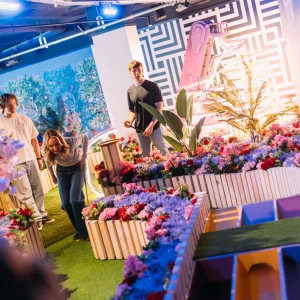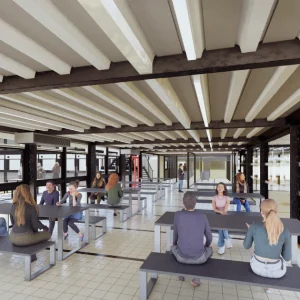 It is 14 years since the Fourth Plinth at Trafalgar Square first became a focus for national debate about modern art. Until 1999 it had been empty for 141 years: this grandly austere slab had originally been intended to support a statue of William IV, but funds ran out and it was left poignantly bare.k
It is 14 years since the Fourth Plinth at Trafalgar Square first became a focus for national debate about modern art. Until 1999 it had been empty for 141 years: this grandly austere slab had originally been intended to support a statue of William IV, but funds ran out and it was left poignantly bare.k

The notion of animating the plinth with a series of contemporary art pieces was the unlikely brainchild of businesswoman and restaurateur Prue Leith – you’ll know her from the BBC’s Great British Menu – but it has now become such an established and predictable source of controversy that it is difficult to think of the plinth in any other way. This small exhibition at the ICA gathers together, in one room, all of the realised and unrealised proposals for this peculiar quirk of London’s cultural life.
Displayed in the form of models, without any preference to those that came to fruition, it is incredible how many of these works became art of the public conscience, even among those that were never actually mounted in this most public of public spaces

Covering a period where British art has been both at its profound, conscience-pricking best as well as its overblownl, self-indulgent worst, this show includes works by international and homegrown artists such as Mark Wallinger, Bob & Roberta Smith, Yinka Shonibare and most recently Elmgreen & Dragset. The early commissions (which were overseen by the RSA, before the job passed to a committee at the Mayor of London’s office) include one of the finest – Rachel Whiteread’s Monument (2001), a simple copy of the Plinth itself, inverted and placed on top. Though this piece did recall a rather austere mausoleum, mostly it just asked you to consider what was already there. It remains a pure, revelatory, and at least physically subversive work, firmly at the formalist end of a spectrum that runs through traditional figuration and surreal humour.

Perhaps unsurprisingly, given the volatile first decade of the new millennium, a majority of the installations make an overt and sometimes cloying comment against war and military aggression. This stands in deliberate contextual dialogue with the Plinth’s setting, in the shadow of Nelson and other military leaders. Simplistic as these contributions may be – thinking perhaps of Sokari Douglas-Camp’s figurative No-o-war-r, No-o-o-war-r!, for example – they are a reminder that the plinth genuinely has become part of the national discourse. The most baldly realised illustration of how the Fourth Plinth has caught public imagination is of course Anthony Gormley’s One and Other, which invited people to climb atop the plinth and make what they wanted of their 60 minutes of fame. Gormley’s work stands in stark contrast with some of the more commercial uses of the plinth, such as a home for Channel 4’s spinning logo.

Within the unrealised proposals, there are some surprising moments of recognition and poignancy; personally Tracey Emin’s meerkats topped the lot and raised a smile to boot. Entitled ‘Something for the Future’, the four familiar figures reference a well-known – or well advertised – insurance comparison website, making ridiculous the inflated faith we put in removed, abstract decisions on financial security. Yes, ok, it’s a British joke (but what’s wrong with that? All the guys on the other three plinths are too. British, that is).
Since 1999, the Fourth Plinth project has been a measure of changing and often impassioned attitudes towards art, royalty, power and participation. Demonstrating this, at the centre of this exhibition, is an absorbing collage of contemporary newspaper reports that remind one of just how heated such debates could be. At heart though, the ever-changing artworks on the plinth represent a continual argument about public space: who is it for and what sort of activities or ornamentation should it accommodate. It is rumoured that ultimately the plinth will become home to a representation of our present monarch after she dies. It will be a true shame if that also brings an end to this most vigorous national debate.





